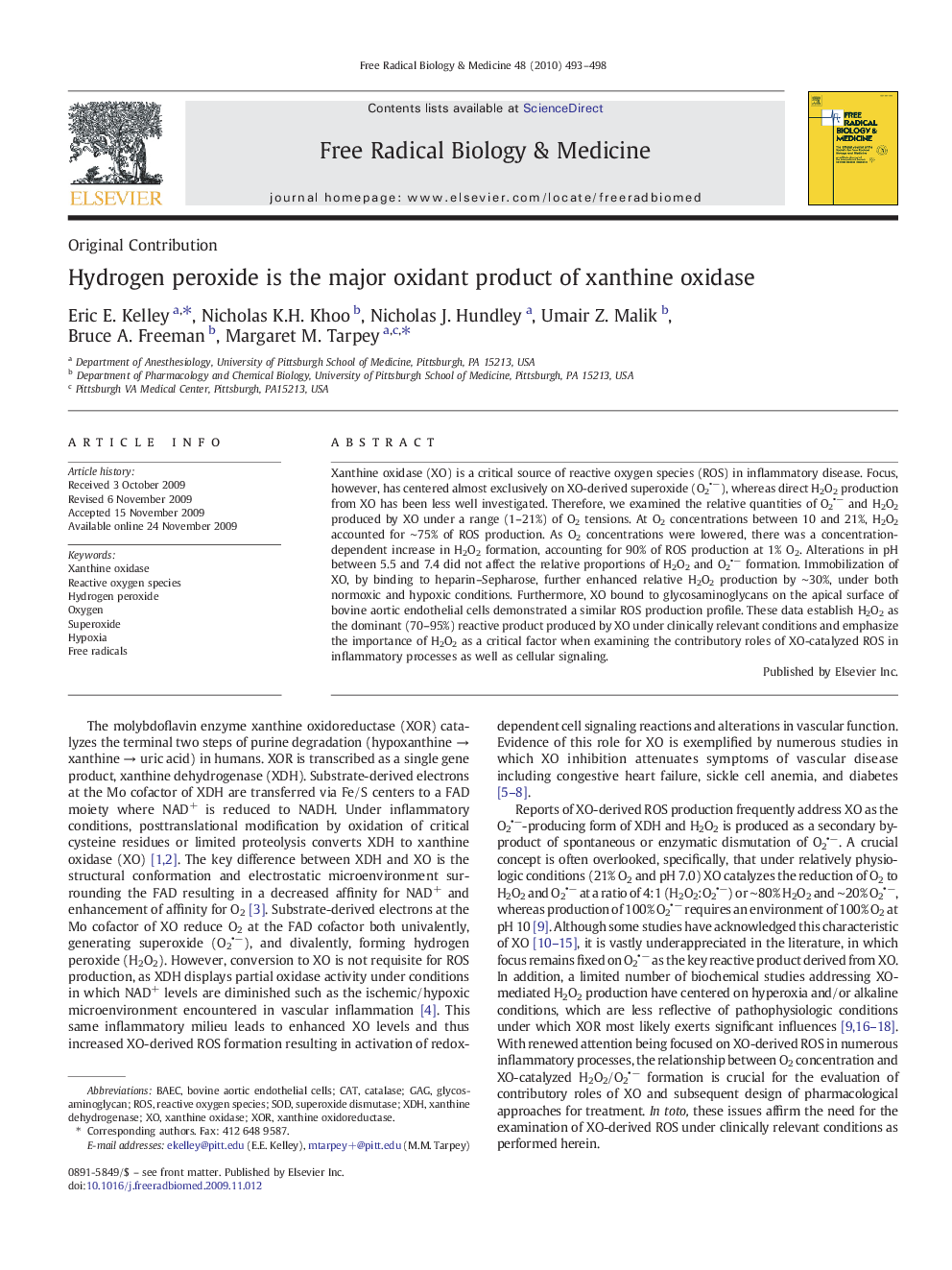| Article ID | Journal | Published Year | Pages | File Type |
|---|---|---|---|---|
| 1910266 | Free Radical Biology and Medicine | 2010 | 6 Pages |
Xanthine oxidase (XO) is a critical source of reactive oxygen species (ROS) in inflammatory disease. Focus, however, has centered almost exclusively on XO-derived superoxide (O2•−), whereas direct H2O2 production from XO has been less well investigated. Therefore, we examined the relative quantities of O2•− and H2O2 produced by XO under a range (1–21%) of O2 tensions. At O2 concentrations between 10 and 21%, H2O2 accounted for ∼75% of ROS production. As O2 concentrations were lowered, there was a concentration-dependent increase in H2O2 formation, accounting for 90% of ROS production at 1% O2. Alterations in pH between 5.5 and 7.4 did not affect the relative proportions of H2O2 and O2•− formation. Immobilization of XO, by binding to heparin–Sepharose, further enhanced relative H2O2 production by ∼30%, under both normoxic and hypoxic conditions. Furthermore, XO bound to glycosaminoglycans on the apical surface of bovine aortic endothelial cells demonstrated a similar ROS production profile. These data establish H2O2 as the dominant (70–95%) reactive product produced by XO under clinically relevant conditions and emphasize the importance of H2O2 as a critical factor when examining the contributory roles of XO-catalyzed ROS in inflammatory processes as well as cellular signaling.
